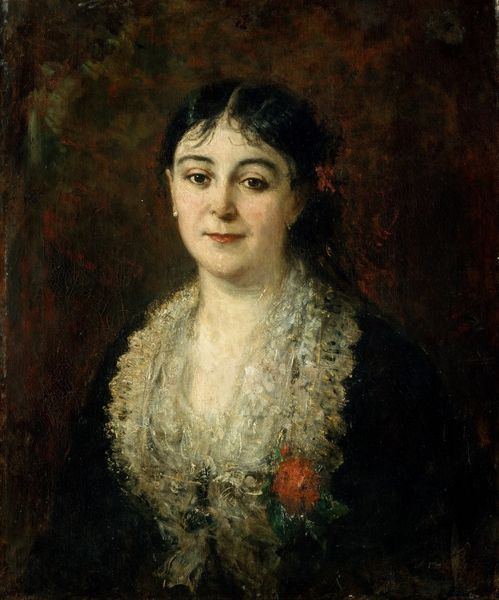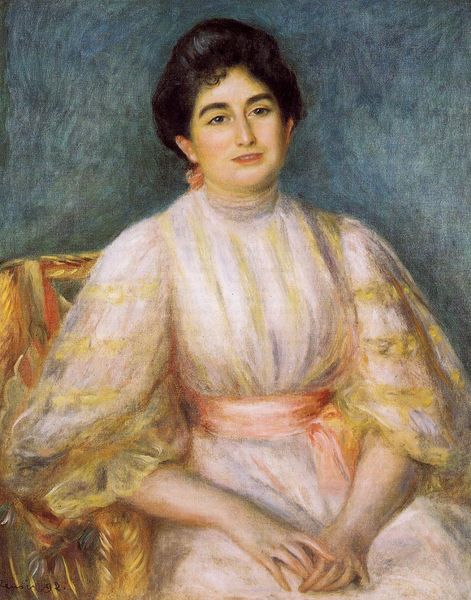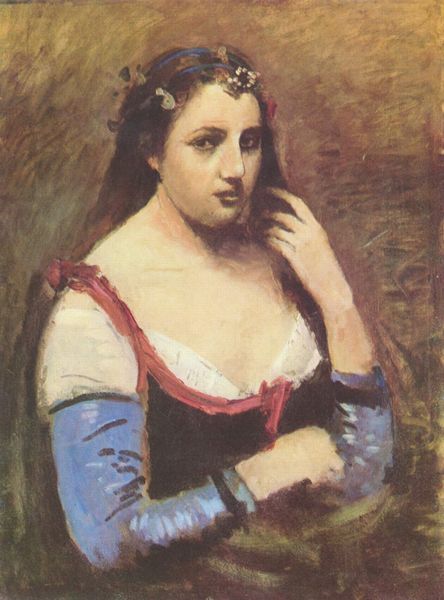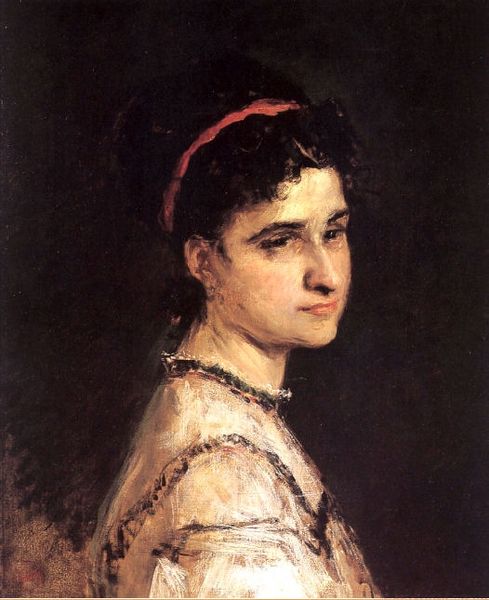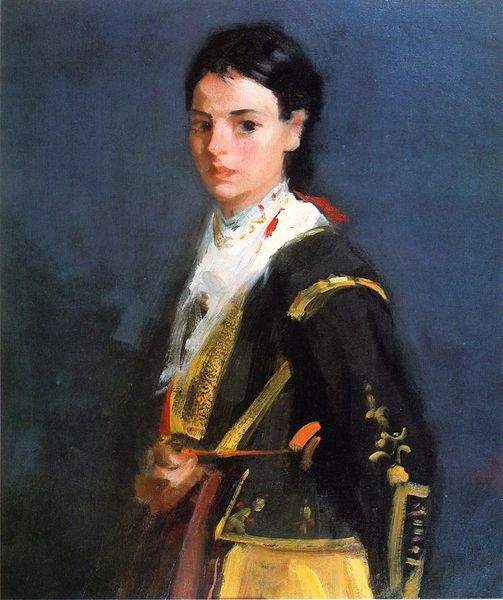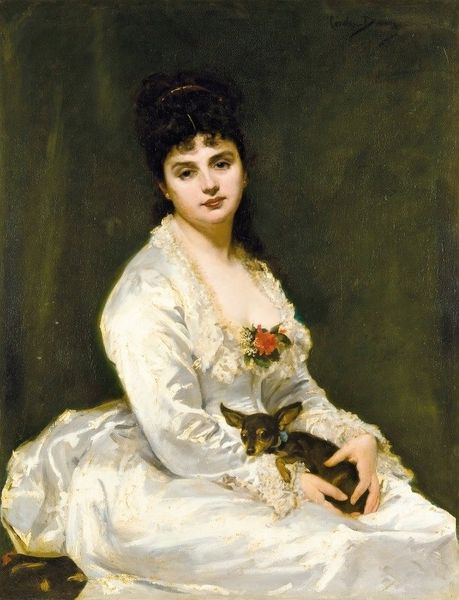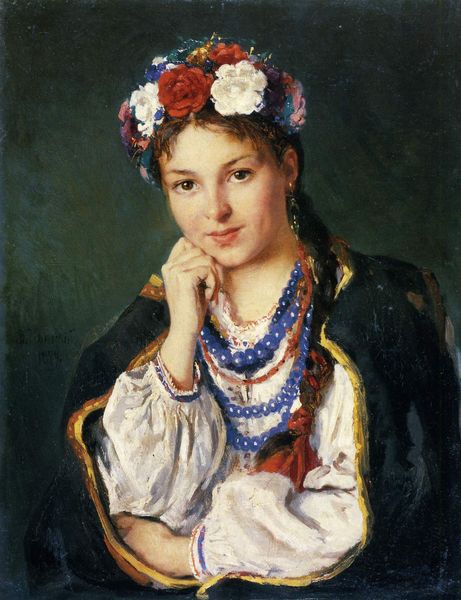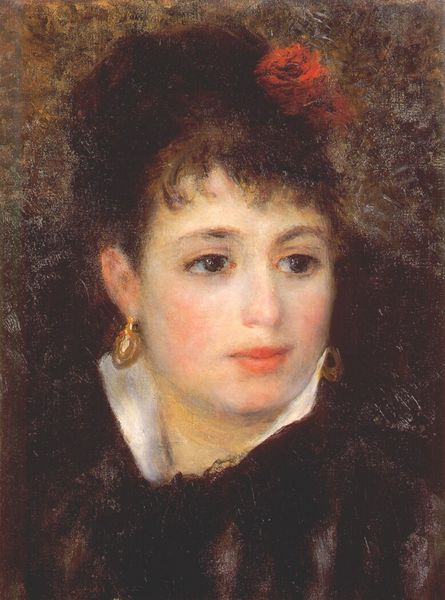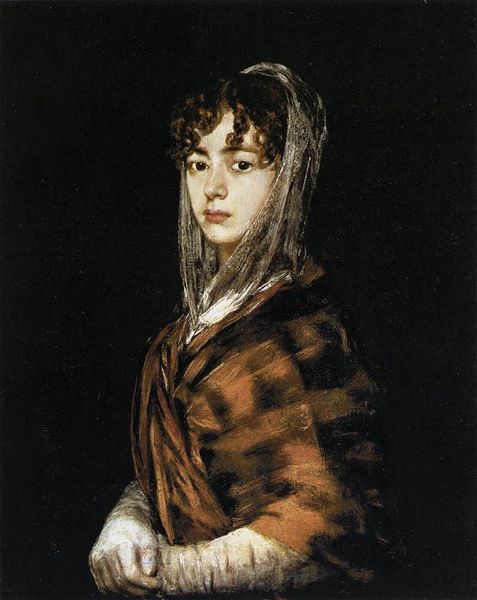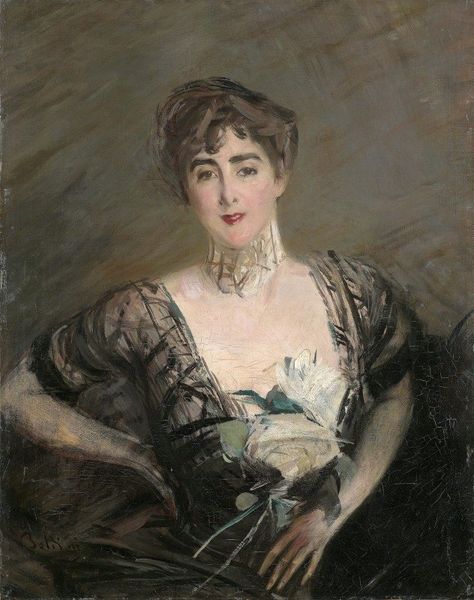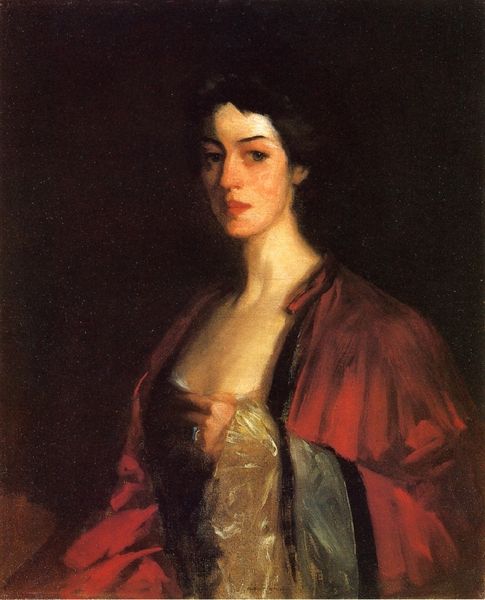
Portrait of Emilie Ambre in role of Carmen 1879
0:00
0:00
edouardmanet
Philadelphia Museum of Art, Philadelphia, PA, US
painting, oil-paint
#
portrait
#
painting
#
impressionism
#
oil-paint
#
oil painting
#
genre-painting
#
portrait art
#
modernism
Copyright: Public domain
Curator: Editor: Manet’s “Portrait of Emilie Ambre as Carmen,” painted in 1879, is just captivating. It feels almost theatrical, not just because it’s a portrait of an opera singer, but also because of the way the colors pop. What stands out to you? Curator: It’s the layering of representation, isn't it? We're not just seeing Emilie Ambre, but Ambre *as* Carmen, a character that herself signifies particular modes of production and consumption in 19th-century France. Think about the labour involved in constructing that image – from the seamstresses creating her costume, to the cultivation of exoticism surrounding opera stars. Does the painting celebrate or critique these power dynamics? Editor: That’s such an interesting point. I hadn't thought about it like that, more the actual process and people that created it! The textures and layers definitely become more than just a visual choice then, right? How does the brushwork play into that idea? Curator: Exactly! Manet's visible brushstrokes, which were considered very modern for the time, draw attention to the act of painting itself. He’s flaunting the production, making you aware of the materials and the artist's hand in constructing the image. And the costume she wears…that references specific economic exchanges, social values placed upon stage performance and constructed identities. Do you see it as him blurring boundaries between performer, character, and commodity? Editor: Absolutely. Seeing it that way changes everything! The portrait isn't just capturing someone; it’s about the cultural creation of persona. Thinking about how her very image becomes a commodity and reflection of broader consumer culture, like the accessibility of this very piece hanging in the museum today for mass viewership. Curator: Precisely. Hopefully by discussing production and performance, a clearer understanding appears when looking at portraits and materiality, helping you grasp more than aesthetics in this space. Editor: Definitely! Considering art this way feels like I'm unlocking a whole new level of understanding! Thanks.
Comments
No comments
Be the first to comment and join the conversation on the ultimate creative platform.
